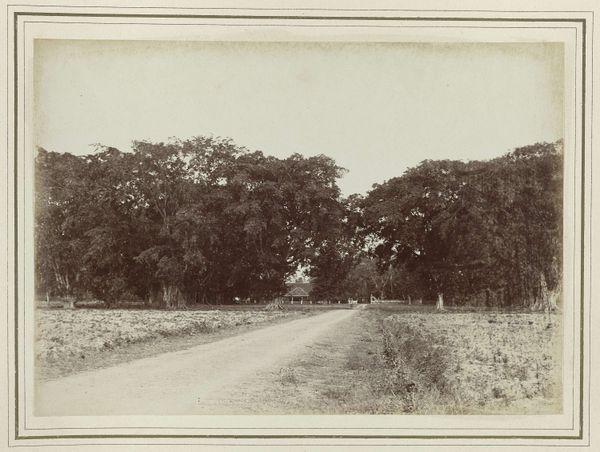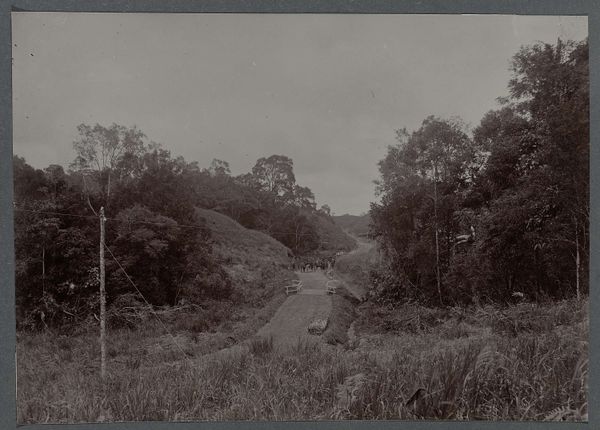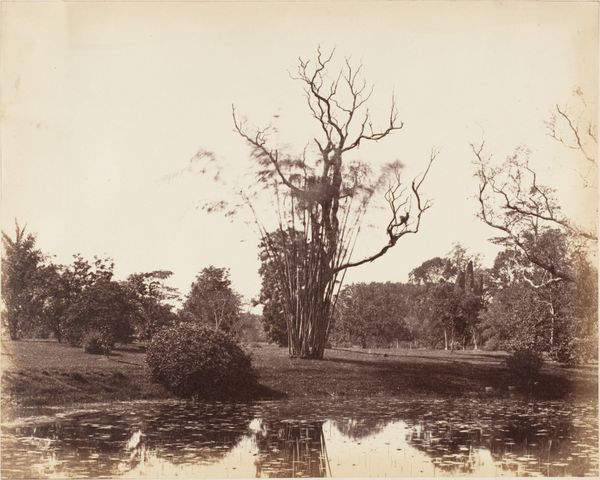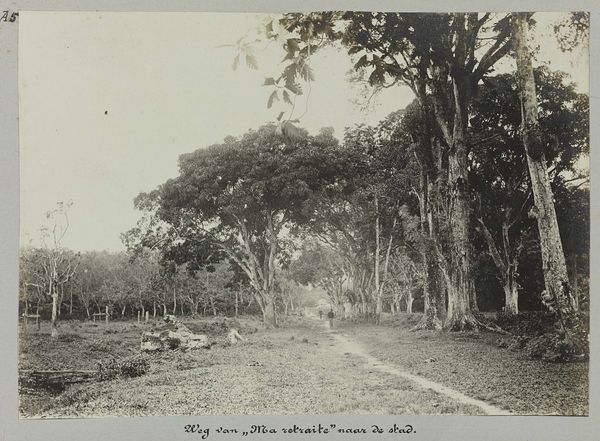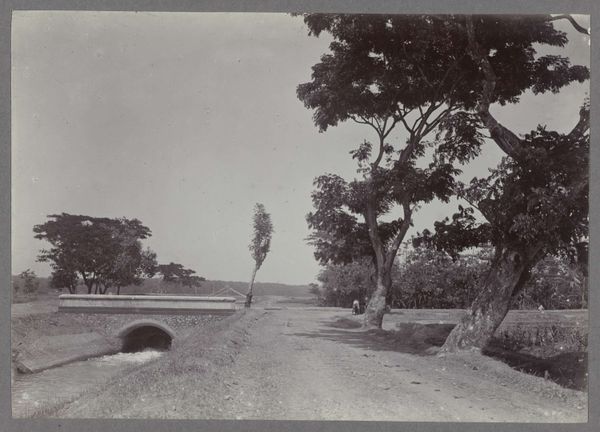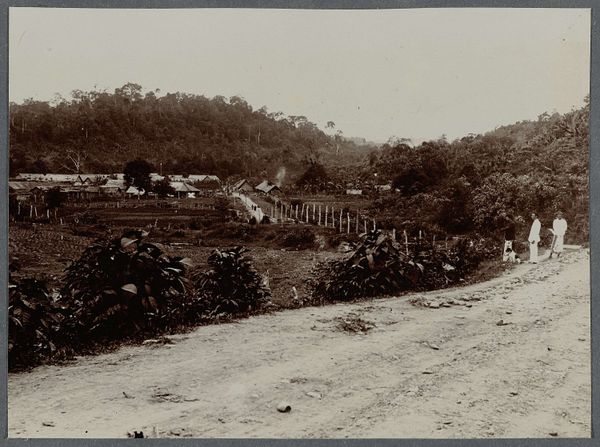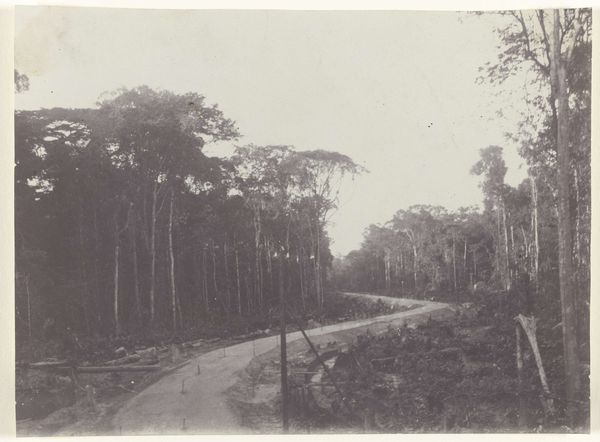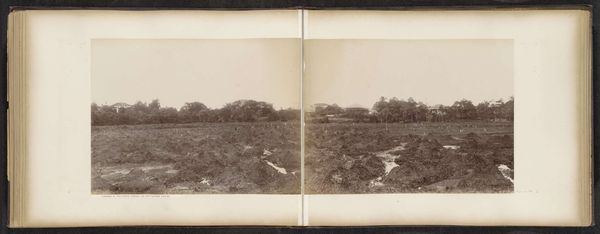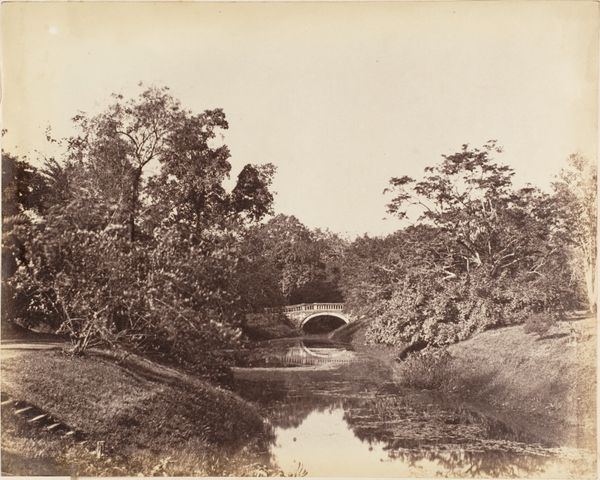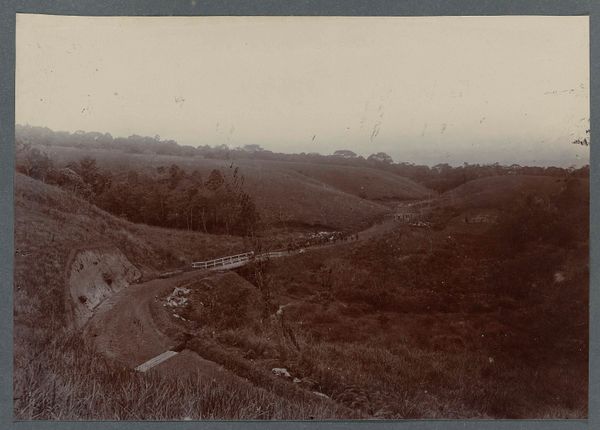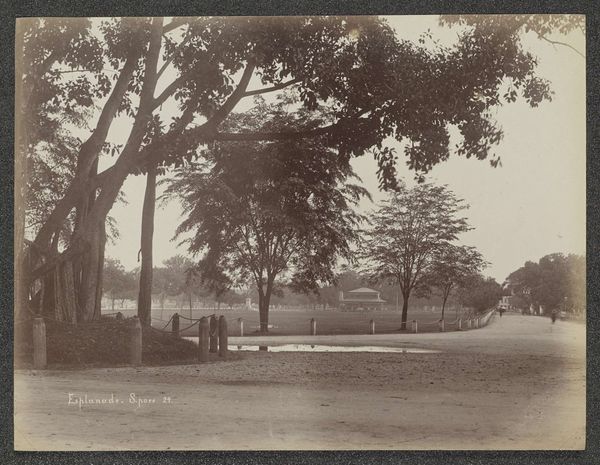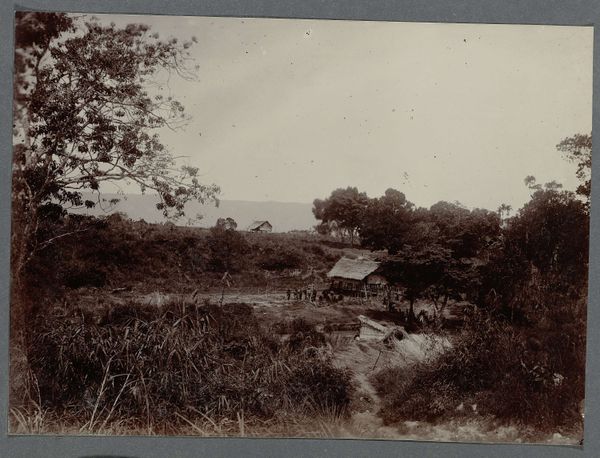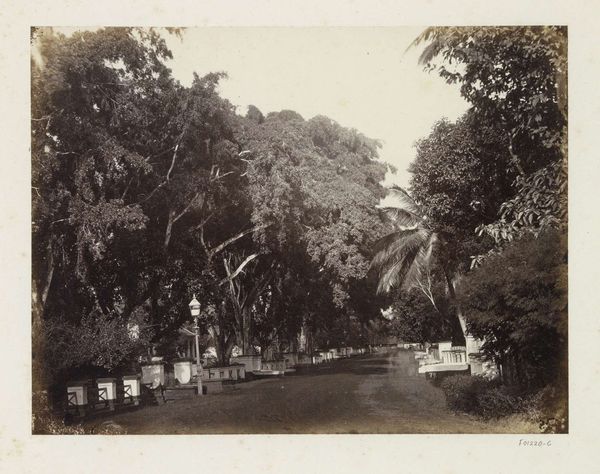
print, photography
# print
#
landscape
#
nature
#
photography
#
realism
Dimensions: height 138 mm, width 200 mm
Copyright: Rijks Museum: Open Domain
Curator: Editor: So, here we have this gelatin silver print called "Aanleg van de weg," or "Road Construction," created sometime between 1903 and 1913 by an anonymous photographer. It's...well, it's stark. The black and white tones make the scene of the unfinished road feel almost desolate. What's your take on this? Curator: For me, this piece immediately calls to mind questions of labor and industry. Who were the hands that toiled to construct this road? What was the social context surrounding this construction? The material reality is that someone physically shaped this landscape. What kind of technology would have been used? Editor: That’s interesting! I was so focused on the final image, I hadn't really considered the physical labor involved. It gives the image a whole new layer. The means of production really were quite physical, looking at this. Curator: Exactly. The finished photograph might be viewed as art, but let’s not forget the raw materials of the road itself—the dirt, the rocks, the tools. All touched by labourers. We need to question where they are in the photograph. Almost excised? This photo is absent the most important resource...people! Does this imply they have been ‘consumed’ by production? Editor: That's a really insightful point about absence and consumption. I came into this thinking of it simply as a landscape photograph. Now I am wondering where and how humans interact with this construction site. The social element changes the whole composition of this image. Curator: It is like they're ghosted by this landscape that they built. Considering the material reality of production reframes our reading of its composition as something far more challenging, wouldn't you say? Editor: Definitely! I never really considered those points, that there could be social layers here that change what the photograph is supposed to portray! It really gets you thinking about what isn't explicitly shown. Curator: Exactly. Examining art through a materialist lens really opens up new paths of understanding.
Comments
No comments
Be the first to comment and join the conversation on the ultimate creative platform.
